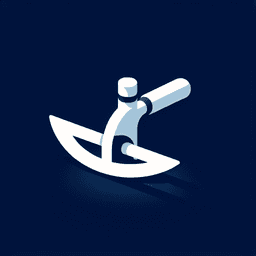
Tiller Definition and Examples: Understanding Its Role and Uses
January 16, 2025
Tiller
A tiller is a crucial component in the steering mechanism of a boat, particularly in smaller vessels. It is a lever attached to the top of the rudder post, which allows the helmsman to control the direction of the boat. By moving the tiller from side to side, the angle of the rudder is adjusted, thus steering the vessel.
In maritime contexts, the tiller is often preferred for its simplicity and direct control, especially in traditional sailing boats. It provides a tactile connection between the sailor and the water, offering immediate feedback on the boat's handling and responsiveness.
While modern boats may use a wheel for steering, the tiller remains popular in dinghies, small yachts, and other vessels where space is limited or where a more hands-on approach to steering is desired. The tiller's design can vary, with some being straight and others curved, depending on the specific needs of the vessel and the preferences of the sailor.
Understanding how to effectively use a tiller is an essential skill for sailors, as it directly impacts the maneuverability and safety of the boat. Proper use involves not only steering but also balancing the boat and adjusting to wind and water conditions.
Understanding the Tiller in Maritime Context
What is a Tiller?
A tiller is a lever used to steer a boat or ship. It is typically attached to the rudder post or stock, providing the necessary leverage to turn the rudder and control the vessel's direction. This mechanism is primarily found on smaller boats, as larger ships require more complex steering systems.
Is a Tiller the Same as a Rudder?
No, a tiller and a rudder are not the same. The rudder is a flat piece, usually located at the stern of the boat, that moves through the water to steer the vessel. The tiller, on the other hand, is the handle or lever that the helmsman uses to move the rudder. By moving the tiller, the rudder is turned, which in turn changes the direction of the boat.
Where is the Tiller Located on a Ship?
On a ship, the tiller is connected to the rudder post or stock. It is usually positioned at the stern, where it can be easily accessed by the helmsman. The tiller is moved in the opposite direction of where the bow is intended to go, providing a simple yet effective means of steering.
What are the Commands of the Tiller on a Ship?
Commands for using a tiller are straightforward. The helmsman pushes or pulls the tiller in the opposite direction of the desired turn. For example, to turn the bow to port (left), the tiller is pushed to starboard (right). This intuitive method allows for precise control over the vessel's navigation.
What is the Function of a Tiller in Maritime Steering Systems?
The primary function of a tiller in maritime steering systems is to provide a simple and direct method of controlling the rudder. By exerting torque on the rudder post, the tiller allows the helmsman to steer the vessel effectively. This system is particularly advantageous for smaller boats, where manual steering is feasible.
Conclusion
In maritime contexts, the tiller is an essential component for steering smaller vessels. Its simplicity and effectiveness make it a preferred choice for many sailors, providing direct control over the boat's direction. Understanding the role and operation of a tiller is crucial for anyone involved in maritime navigation.




